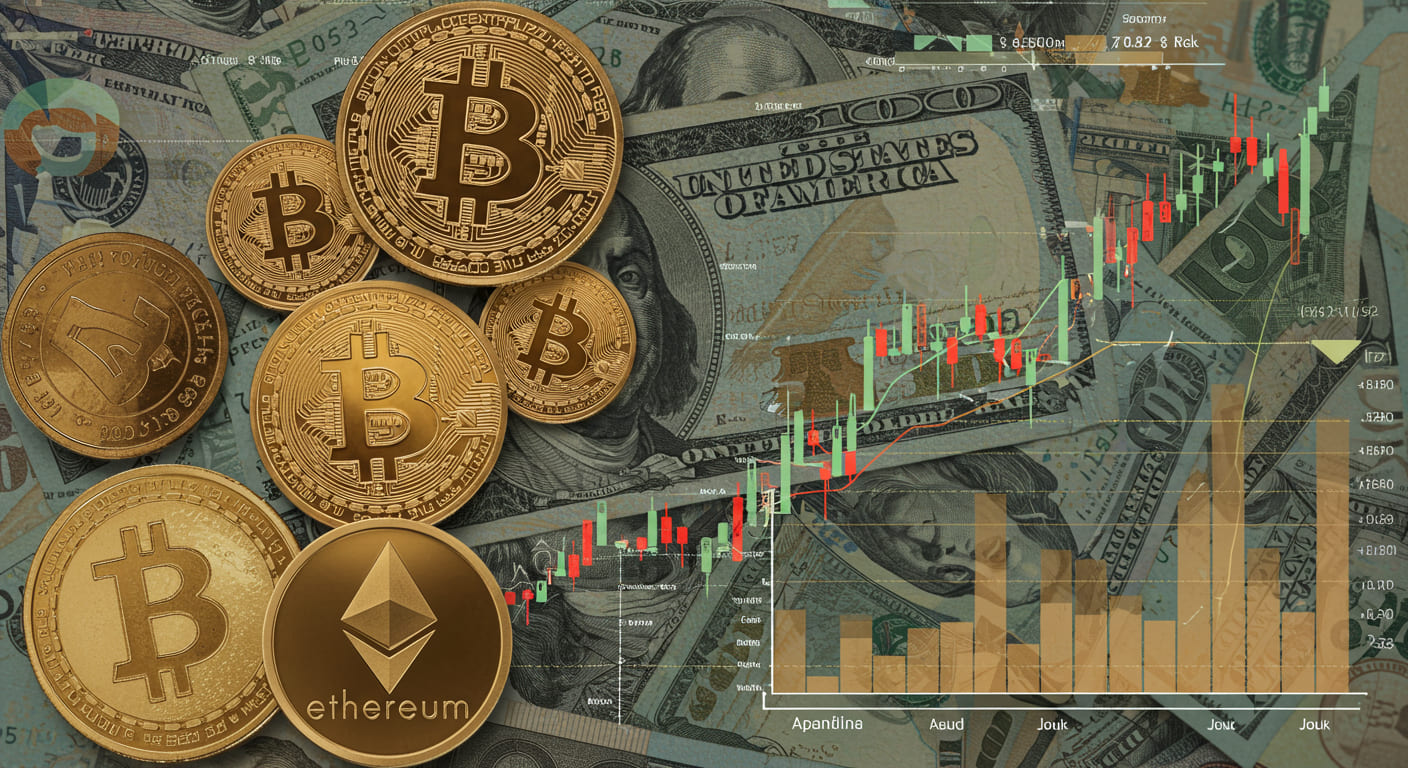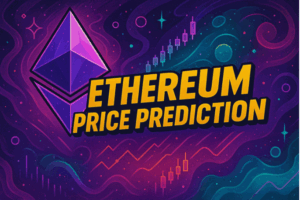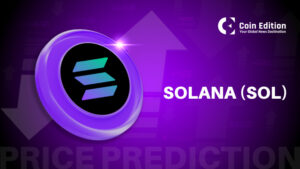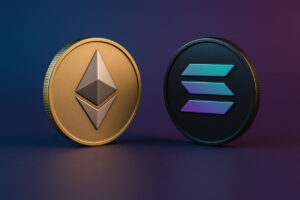Ethereum vs. Solana in 2025: The Future of Blockchain Technology

Exploring the Future of Digital Finance: ethereum and Solana as Alternatives to bitcoin
The Rise of bitcoin and the Evolution of Cryptocurrency
Since its inception in 2009, bitcoin has emerged as the premier cryptocurrency, recognized for its role as a store of value, a safeguard against inflation, and a beacon of financial decentralization. However, the cryptocurrency landscape has transformed dramatically, spawning numerous projects with unique propositions. By 2025, two standout alternatives to bitcoin have emerged: ethereum and Solana. Both of these platforms boast technical innovations, robust communities, and a burgeoning ecosystem of decentralized applications (dApps). This article delves into 22 key points that highlight the significance of these cryptocurrencies and why they are essential for anyone looking to expand their understanding of digital finance.
- The Rise of bitcoin and the Evolution of Cryptocurrency
- ethereum: A Programmable Platform for the Future
- The Merge: A Historic Transformation
- A Mature Ecosystem
- A Deflationary Model
- Decentralized Governance
- Enhanced Scalability
- Interoperability and Multichain Connectivity
- Solana: A High-Performance Alternative
- Speed and User Experience
- Attracting Non-Technical Users
- Innovative Physical Infrastructure
- A Vibrant DeFi Ecosystem
- Leading in the NFT Space
- Rapid Community Growth
- Energy Efficiency
- Complementary Roles in the Crypto Ecosystem
- The Promise of Innovation
- Challenges Ahead
- Decentralization Concerns
- Complexity in ethereum
- Investment Viability
- Conclusion: The Importance of ethereum and Solana in 2025
ethereum: A Programmable Platform for the Future
Launched in 2015, ethereum was designed with a vision that transcends mere value transfer; it aims to facilitate the development of smart contracts. This groundbreaking feature has empowered developers to create dApps directly on the blockchain, leading to the emergence of sectors such as decentralized finance (DeFi), non-fungible tokens (NFTs), decentralized autonomous organizations (DAOs), and metaverses. Unlike bitcoin, which primarily serves as a monetary asset, ethereum functions as a programmable platform.
The Merge: A Historic Transformation
In 2022, ethereum underwent a pivotal upgrade known as The Merge, transitioning from a Proof of Work (PoW) to a Proof of Stake (PoS) consensus mechanism. This change significantly lowered the network’s energy consumption and set the stage for enhanced scalability. By 2025, with the implementation of second-layer solutions like Arbitrum and Optimism, ethereum has evolved into one of the most adaptable networks globally.
A Mature Ecosystem
One of ethereum‘s standout features is the maturity of its ecosystem. Major DeFi protocols such as Uniswap, Aave, and Curve operate on its blockchain, while leading NFT marketplaces like OpenSea also rely on ethereum as their primary platform. This creates a well-established infrastructure with millions of active users and developers.
A Deflationary Model
Another compelling aspect of ethereum is its deflationary model. The burning mechanism introduced in EIP-1559 allows a portion of transaction fees to be permanently removed from circulation, gradually decreasing the supply of ETH. During periods of heightened activity, the network effectively becomes deflationary, enhancing its appeal as a long-term investment.
Decentralized Governance
ethereum also benefits from a decentralized governance structure, where decisions are made through extensive discussions among developers, the community, and validators. This ensures ongoing evolution while upholding the principles of decentralization. In contrast, bitcoin evolves slowly, prioritizing stability over rapid changes.
Enhanced Scalability
By 2025, ethereum‘s scalability has improved significantly compared to its earlier years. The rollup-centric roadmap allows transactions on networks like Base, zkSync, and Starknet to occur at minimal costs, subsequently recorded on the mainnet. This architecture enables thousands of transactions per second, a feat unimaginable in the network’s formative years.
Interoperability and Multichain Connectivity
ethereum leads in interoperability, with bridges and connections to other blockchains that facilitate asset exchanges across different ecosystems. This enhances its usability in an increasingly multichain universe, which is becoming more relevant in the cryptocurrency landscape.
Solana: A High-Performance Alternative
Now, let’s turn our attention to the second significant alternative: Solana. Launched in 2020, Solana was built with scalability in mind, employing a hybrid consensus model known as Proof of History (PoH) alongside Proof of Stake. This architecture enables the network to handle thousands of transactions per second at minimal costs.
Speed and User Experience
By 2025, Solana has set a benchmark for speed and user experience. With an average block time of just 400 milliseconds and transaction fees that are mere fractions of a cent, its efficiency has fostered the growth of user-friendly dApps like Phantom Wallet, DEX Jupiter, and NFT projects such as Degenerate Ape Academy.
Attracting Non-Technical Users
One of Solana’s remarkable achievements is its ability to attract non-technical users. With a seamless, fast, and cost-effective user experience, it has become an entry point for countless new users into the cryptocurrency space, including gamers, artists, and digital entrepreneurs who prefer avoiding high fees and slow transactions.
Innovative Physical Infrastructure
Solana has also made significant investments in physical infrastructure, launching its own smartphone, the Saga, which integrates Web3 capabilities. This type of innovation illustrates the project’s commitment not just to blockchain technology but also to the holistic integration of software and hardware, a rarity in the industry.
A Vibrant DeFi Ecosystem
In the realm of decentralized finance, Solana hosts protocols like Marinade, Jito, and Drift, which provide liquid staking, derivatives, and decentralized trading solutions with substantial liquidity. This indicates that, despite being relatively young, its financial ecosystem is dynamic and expanding.
Leading in the NFT Space
In the NFT arena, Solana has emerged as a prominent hub, offering creation and trading with negligible fees. Projects like Solana Monkey Business and marketplaces such as Magic Eden have solidified its position as a leading player in this segment, second only to ethereum.
Rapid Community Growth
In terms of community, Solana has experienced rapid growth. Hackathons, conferences, and educational initiatives have been pivotal in attracting developers and enthusiasts. By 2025, the Solana Foundation remains active in nurturing new talent and supporting innovative projects.
Energy Efficiency
Another notable feature of Solana is its energy efficiency. With a Proof of Stake-based framework and optimized hardware utilization, it operates with significantly lower energy consumption than traditional blockchains. This aligns with contemporary environmental concerns and the demand for sustainable solutions in the sector.
Complementary Roles in the Crypto Ecosystem
When comparing Solana to bitcoin, it becomes evident that they serve entirely different purposes. While bitcoin is recognized as a store of value, resilient and stable, Solana emphasizes scale, speed, and functionality. Therefore, they do not compete directly but rather complement each other within a diversified investment portfolio.
The Promise of Innovation
Both ethereum and Solana embody the most promising aspects of blockchain evolution: smart contracts, thriving ecosystems, and adaptability. Investors should closely monitor these networks not only for their potential appreciation but also for the structural impact they have on the future of Web3.
Challenges Ahead
Despite their advantages, both networks face challenges. ethereum aims for greater decentralization among validators and improvements in scalability. Conversely, Solana must focus on maintaining network stability and enhancing security during peak usage and potential bugs.
Decentralization Concerns
Decentralization remains a focal point for Solana. Its high-performance architecture relies on more powerful nodes, which can lead to a concentration of power. However, ongoing improvements are being made to encourage broader distribution and community involvement.
Complexity in ethereum
For ethereum, a recurring challenge is the network’s complexity. New users often find it difficult to navigate concepts like rollups, variable fees, and layer-to-layer integrations. Solutions such as multi-chain wallets and simplified user experiences are being developed to address these hurdles.
Investment Viability
In terms of investment, both ETH and SOL are highly liquid assets available on all major exchanges. They are also frequently utilized as collateral in DeFi protocols, reinforcing their utility beyond mere holdings.
Conclusion: The Importance of ethereum and Solana in 2025
In summary, ethereum and Solana are two essential alternatives to bitcoin that every cryptocurrency investor should be aware of in 2025. Each platform presents its unique offerings, advantages, and challenges, making them crucial for understanding the next phase of the digital revolution. By incorporating ETH and SOL into their portfolios, investors can broaden their exposure to genuine innovations, vibrant ecosystems, and the core of the decentralized financial future.







